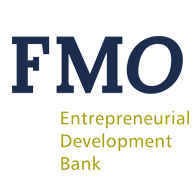SK FINANCE LIMITED
Status: Completed investmentWhy disclosure?
FMO is committed to making publicly available relevant investment information that informs stakeholders and enables them to engage directly with FMO on its investments which, in turn, enhances our investment decisions, the design and implementation of projects and policies, and strengthens development outcomes. Learn more
In case of questions
In case of questions, please contact us at disclosure@fmo.nl
Disclaimer
The information as disclosed is indicative and provided on an "as-is/as available" basis for general informational purposes only and should not be construed as financial, legal or investment advice, nor as a commitment or an offer to arrange or provide any financing. The final decision to provide financing is subject to the terms and conditions of FMO in its sole and absolute discretion. When providing links to other sites, FMO bears no responsibility for the accuracy, legality or content of the external site or for that of subsequent links. The information on proposed investment for high-risk investments is made available in the language relevant to the country or region where the bulk of operations take place. Translations of any information into languages other than English are intended as a convenience for local stakeholders. In case of any discrepancy, the information provided in English will prevail.
Who is our customer?
Esskay Fincorp Limited (‘Ess Kay’) is a non-deposit taking NBFC, incorporated in 1994, mainly engaged in the business of providing asset-backed financing for income generating activities in the Commercial Vehicle (CV) and MSME lending segments. They focus on used vehicles (74%) in rural and semi-rural locations and many customers are first time borrowers (40%) and first-time users (15% - entrepreneurs setting up business). The largest shareholder is Rajendra Kumar Setia, the founder and CEO, holding 44%. Other key shareholders are private equity players Norwest (24%), TPG Growth (13%), Baring (9%) and Evolvence Colnvest (8%). Ess Kay was first onboarded as a MASSIF client in 2014 when FMO provided a EUR 6m equivalent in INR 5-year NCD.
What is our funding objective?
The proposed transaction is a USD 40m local currency equivalent loan (or a USD loan depending on investment route) where proceeds will be applied 100% towards the purchase and conversion of gasoline/diesel cars into compressed natural gas (CNG) vehicles.
Why do we fund this investment?
FI Asia’s strategy in India is focused on two segments: i) Green lines (SDG 13, Climate Action) and ii) strong innovative NBFCs that are reducing inequalities (SDG 10, Reduced Inequalities). The proposed transaction contributes to both strategic priorities for FMO. Pollution is a severe problem in Indian cities. By contributing to the growth of Ess Kay's CNG portfolio we are promoting cleaner technologies and helping to improve the air quality. In addition, Ess Kay targets first time borrowers (40% GLP) and entrepreneurs setting up a business (first time users – 15% GLP). This aligns with our mission to reach underserved microentrepreneurs and encourage the progression from informal to formal sectors in order to build up a credit history.
What is the Environmental and Social categorization rationale?
Ess Kay is categorized as an E&S Category C client, based on the nature of the clients (MSME), average loan size (>92% of the portfolio consists of loans <USD 10K) and the nature of the assets financed (primarily vehicles). Furthermore Ess Kay has no exposure to the FMO Exclusion List. Current E&S practice within Ess Kay is commensurate with the risk of Ess Kay’s business and no action plan is required.
More investments
| Date | Total FMO financing |
|---|---|
| 5/25/2023 | INR 4100.00 MLN |
| 6/21/2019 | INR 480.00 MLN |
- Website customer/investment
- http://www.skfin.in
- Region
- Asia
- Country
- India
- Sector
- Financial Institutions
- Publication date
- 10/30/2019
- Effective date
- 12/9/2019
- End date
- 2/18/2025
- Total FMO financing
- INR 2900.00 MLN
- Funding
- FMO NV
-
Risk categorization on environmental and social impacts, A = high risk, B+ = medium high risk, B = medium risk, C = low risk
Environmental & Social Category
(A, B+, B or C) - C

